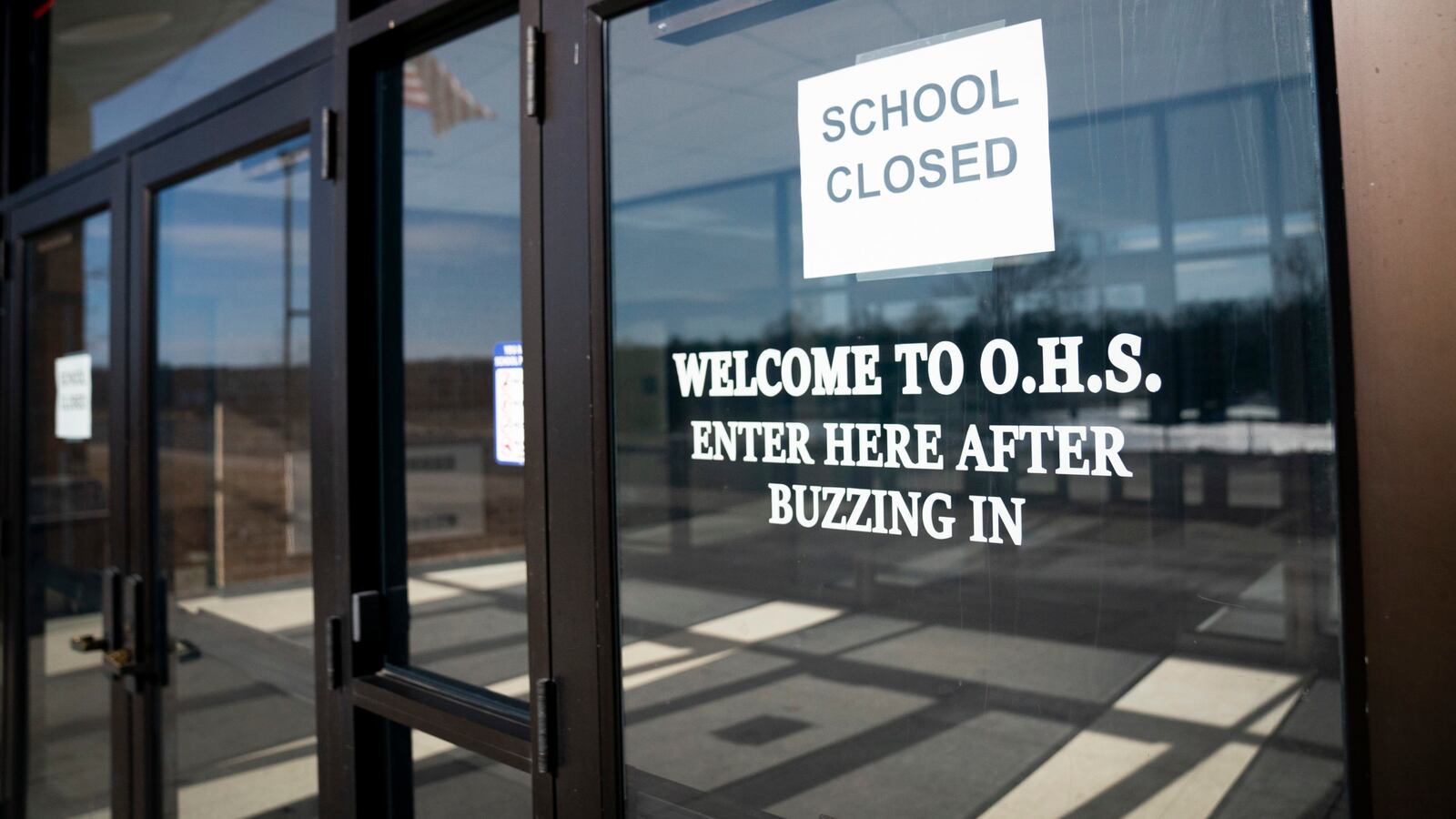Officials deciding whether to close schools must consider the costs of leaving health care workers without child care, new research shows — or they risk losing the potential lifesaving benefits of those closures.
An analysis by Colorado State and Yale researchers, released Friday, estimates that 15% of health care providers have children but don’t have another family member in their household to provide child care when schools close. That could keep some of them from going into work and helping patients.
“School closures come with many tradeoffs,” wrote Jude Bayham and Eli Fenichel. “The results suggest that it is unclear if the potential contagion prevention from school closures justifies the potential loss of health care workers.”
The research is the clearest look yet at a key downside of widespread school closures as a tactic to reduce spread of the new coronavirus. Most of the country’s largest school districts, and at least 20 states, have announced closures. And while some have promised to develop alternate child care arrangements for parents who need it, it’s unclear how widespread and effective these contingency plans will be.
The analysis is consistent with guidance released Friday by the Centers for Disease Control and Prevention, which said that other countries’ experiences haven’t proven that closures would slow the illness.
But most questions about whether closures will succeed — including the extent to which health care workers will be able to find alternative child care arrangements — remain unanswered for now.
The paper, which has not been formally peer-reviewed, uses Census data to show that 29% of American health care workers have children in their household between ages 3 and 12. About half of those households have a non-working adult or a teenager who could potentially provide child care. But that still leaves 15% of health care workers without clear avenues for child care when schools close.
Then the researchers make a back-of-the-envelope estimate for what this could mean for the consequences of the coronavirus.
Say that closing schools reduces the spread of the new coronavirus by 15%. If the loss of health care workers increases the disease’s mortality rate from 2% to 2.35% — because there are fewer staffers to care for patients — school closures would ultimately cause more deaths than they would prevent.
Those figures rely on a number of assumptions, which the researchers readily acknowledge. For instance, it’s not known what the true mortality rate is for the new coronavirus, or to what extent closures would limit the coronavirus’ spread.
Under some assumptions, the researchers say, school closures would have a clearly beneficial effect, while others indicate they may be clearly harmful.
Those estimates, the researchers say, “imply great uncertainty to whether school closures will ultimately reduce COVID-19 mortality.”
A particularly big question mark is whether closures would actually cause a substantial share of health care workers to miss work. Many of them, including single parents, might already have a number of other child care solutions. (An older study estimated that school closures would lead to a drop in health care personnel of 6 to 19%.)
Past research on influenza outbreaks has suggested that school closures can limit spread, though it’s unclear if these results will apply to the current virus.
Whether or not closures are a good idea, they are happening at a rapid pace across the country. Leaders in holdouts like New York City and Clark County, Nevada, are facing intense pressure to close, and schools may see absence rates climb among students and staff.
School districts and public health officials, this research suggests, should be working to set up alternative child care arrangements, particularly for health care workers.
Some places have made efforts in this regard. The Los Angeles school district, for one, will be opening child care hubs from 6 a.m. to 6 p.m. In Chicago, the Park District will open 18 sites for emergency child care. San Francisco is converting its libraries into child care centers.
Government action may be especially necessary because community institutions that typically offer child care during summers and spring breaks are responding in different ways. In the Phoenix area, for example, YMCAs and most Boys and Girls Clubs are continuing operations. But in San Diego and Louisville, Kentucky, YMCAs have suspended their camps and child care.


